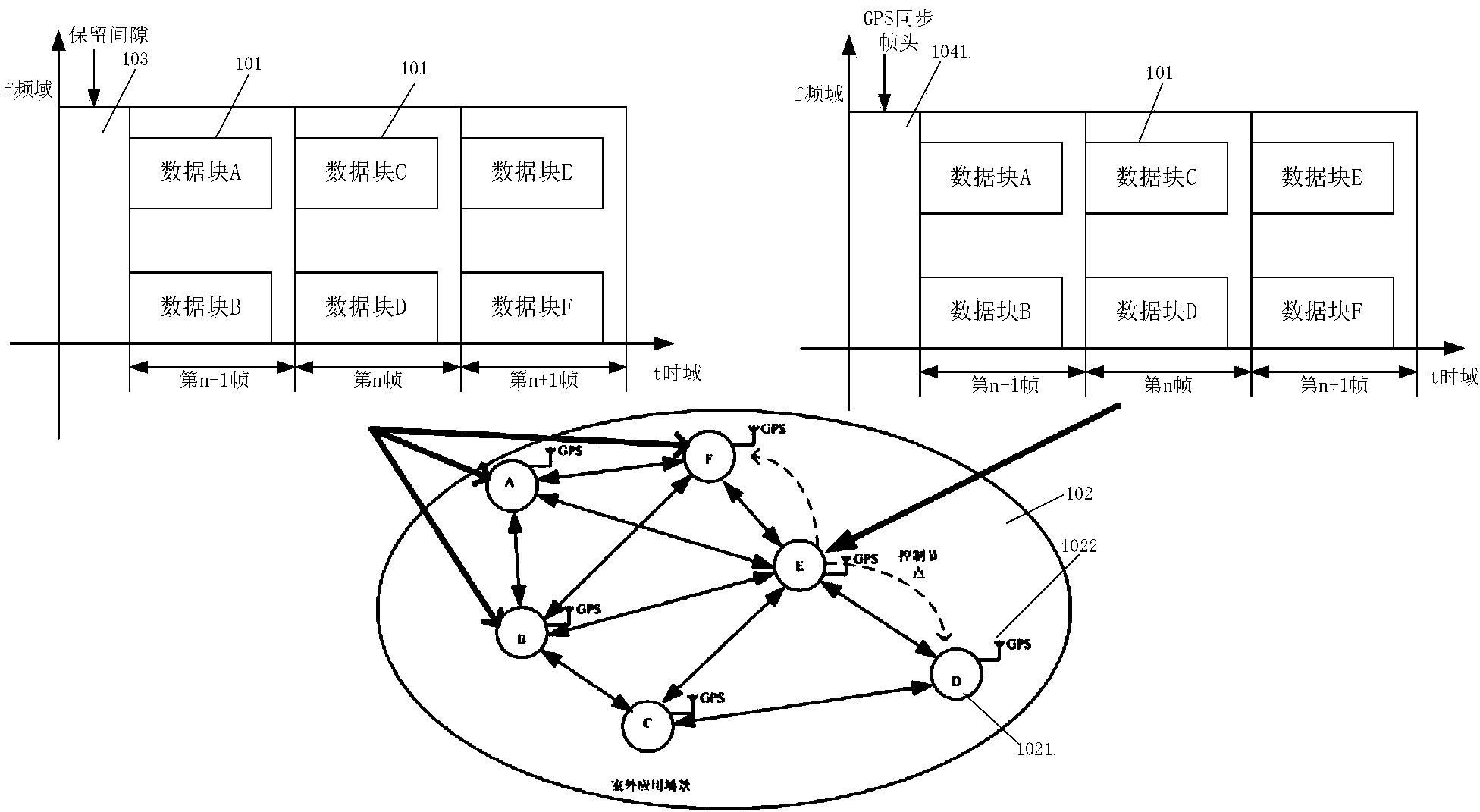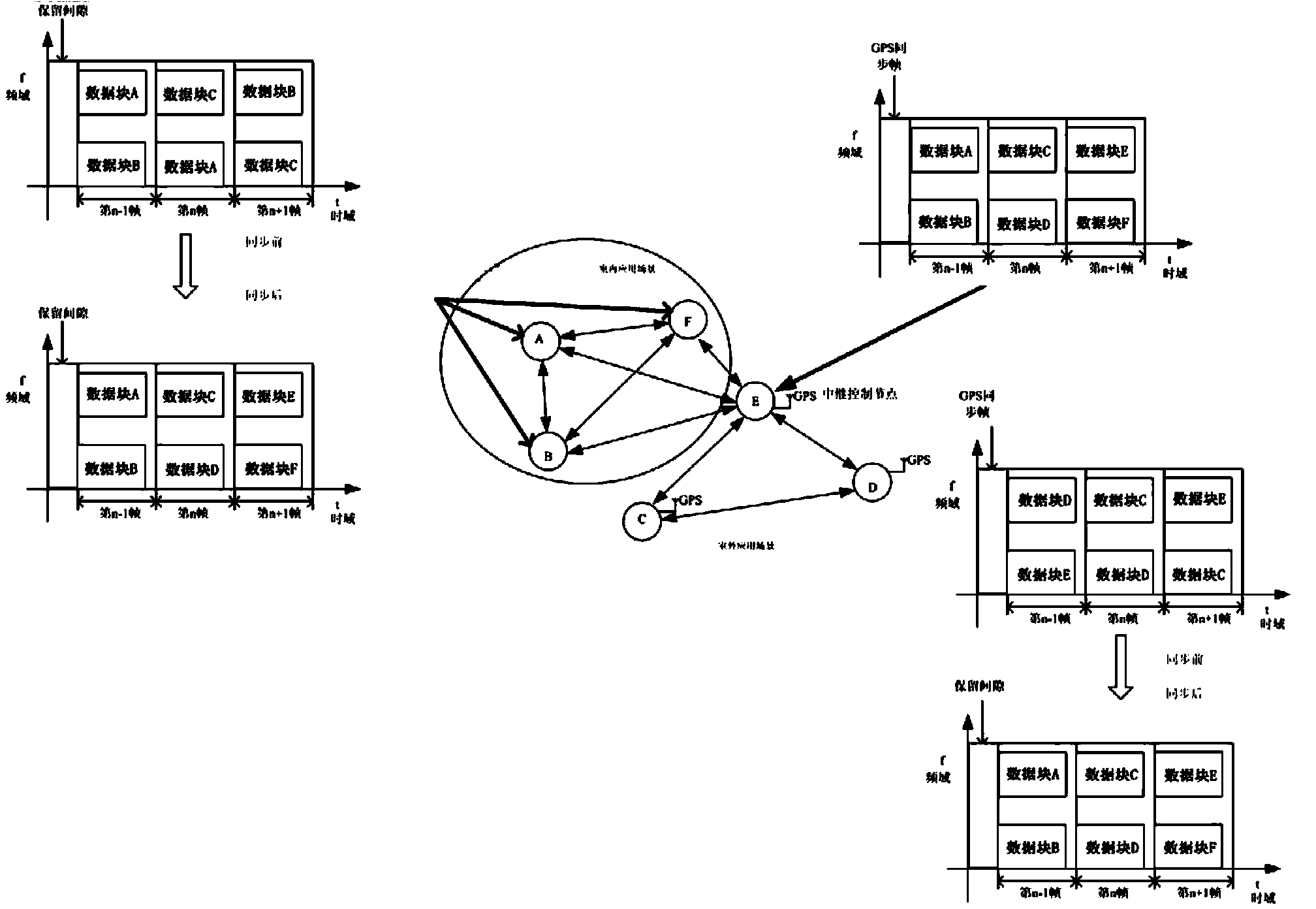Mesh net based OFDMA (orthogonal frequency division multiple access) system and control method
A control method and control node technology, applied in the field of communication, can solve problems such as low spectrum utilization rate and unreasonable resource allocation, and achieve the effect of improving resource sharing and spectrum utilization rate
- Summary
- Abstract
- Description
- Claims
- Application Information
AI Technical Summary
Problems solved by technology
Method used
Image
Examples
Embodiment 1
[0033] In indoor application scenarios, such as figure 1 As shown, all Mesh networks 102 cannot obtain GPS synchronization signals. At this time, any node in the network can be selected as the control node, for example, node E is selected as the control node. The control node is a node temporarily assigned in the network, and can be dynamically changed according to the real-time topology of the Mesh network. The control node E is connected with the same synchronization signal as nodes A, B, C, D and F, so that the signals of other nodes are synchronized with the signals of the control node E. The control node E is responsible for controlling, coordinating, and allocating the sending and scheduling of data blocks corresponding to each node through the communication protocol. In the same time domain, the data broadcasted by each node (including the control node) in the Mesh network 102 is consistent. When receiving, the equipment corresponding to each node receives its own data...
Embodiment 2
[0035] In outdoor application scenarios, such as figure 2 As shown, each node of each unit in the MESH network 102 is equipped with a GPS antenna 1022, and the GPS antenna 1022 is respectively set on each node, and each node can obtain a GPS clock synchronization signal 1022 through the GPS antenna 1022. When all the nodes in the Mesh network can normally receive the GPS clock synchronization signal, the synchronization frame header is correspondingly the GPS synchronization frame header. like figure 2 , Node A, Node B, Node C, Node D, Node E, and Node F are all provided with a GPS antenna 1022 . At this time, any node in the network can be selected as the control node, for example, node E is selected as the control node. The control node is temporarily assigned in the network and can change its role at any time. The control node E with the GPS antenna is mainly responsible for controlling, coordinating and distributing the sending and scheduling of data blocks correspondi...
Embodiment 3
[0037] In indoor and outdoor or mixed application scenarios, such as image 3 As shown, when synchronous communication is required between different Mesh networks, the frame structures sent by the two unsynchronized network nodes are different. At this time, the control node needs to be selected as the relay control node. Preferably, the node closest to the physical location between the two Mesh networks is selected as the relay control node, and the relay control node preferably selects the node that can normally receive the outdoor GPS clock synchronization signal. For example, node E is selected as the relay control node. The relay control node is used for synchronizing the frame structure between two Mesh networks with asynchronous communication, and re-dividing the two Mesh networks in the same time domain and frequency domain. The two Mesh networks with asynchronous communication are two originally independent edge nodes that meet the geographic location conditions for ...
PUM
 Login to View More
Login to View More Abstract
Description
Claims
Application Information
 Login to View More
Login to View More - R&D
- Intellectual Property
- Life Sciences
- Materials
- Tech Scout
- Unparalleled Data Quality
- Higher Quality Content
- 60% Fewer Hallucinations
Browse by: Latest US Patents, China's latest patents, Technical Efficacy Thesaurus, Application Domain, Technology Topic, Popular Technical Reports.
© 2025 PatSnap. All rights reserved.Legal|Privacy policy|Modern Slavery Act Transparency Statement|Sitemap|About US| Contact US: help@patsnap.com



